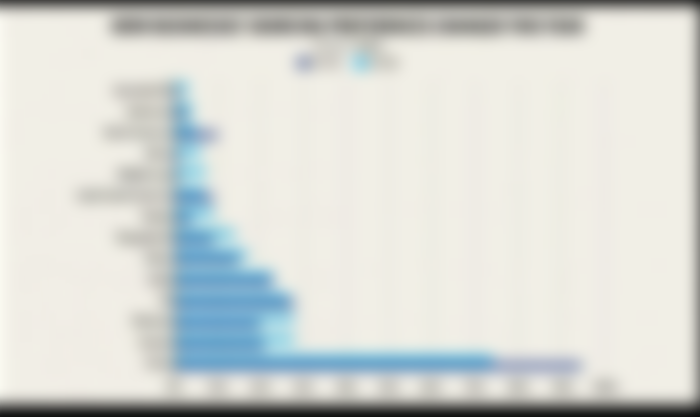
Bangladesh remains one of the top sourcing destinations after China for international clothing retailers and brands even during the coronavirus pandemic because of its competitive prices, according to a new report by leading supply chain compliance solutions provider QIMA.
After Vietnam, India and Bangladesh, alternative sourcing options of choice are still largely countries in Asia, including Taiwan, which enjoyed overwhelming preference as a sourcing market among US-based respondents.
[bad iframe src]
The survey named "Evolution of Sourcing in 2020" was conducted in July 2020 by Hong Kong-based QIMA.
It is said to be drawn on input from more than 200 businesses around the world across a variety of consumer product segments and built on previous QIMA research.
The report analyses the evolution of global sourcing in response to the ongoing Covid-19 pandemic, US-China trade tensions and other disruptions to global supply chains.
It says China is down, but not out.
Although China still takes the crown for global sourcing, its dominance is noticeably less dramatic compared to previous years, especially in industries such as textile and apparel, where supplier portfolio diversification has been a priority for a while now, the QIMA report said.
Nevertheless, 75 per cent of the respondents globally named China among their top three sourcing geographies, with 55 per cent reporting that Chinese suppliers accounted for over half the buying volumes in the first half of the year.
Vietnam continues with its upward trend, luring in Western buyers as an alternative to China.
Consistently ranking among China's regional competitors, Vietnam continues to reap the most benefits of the continued mass exodus of Western buyers from China, with 40 per cent of the EU respondents and almost as many US brands included Vietnam among their top sourcing regions.
This is in tune with Western brands not venturing too far from China.
The US and the EU brands are exploring sourcing options closer to home but are more likely to near-shore rather than re-shore.
For US-based companies, sourcing destinations closer to their home country continue to grow steadily, with the popularity of Latin and South America almost doubling compared with last year.
Meanwhile, the EU brands are increasingly turning to Turkey as a near-shoring destination as the latter was named among the top three sourcing regions by 30 per cent of EU respondents.
Diversification is on the top of the mind for global brands, but there are some noticeable nuances between regions.
The US brands are by far most likely to diversify sourcing, with 95 per cent of US-based respondents reporting plans to the effect, likely due to the pandemic and worsening geopolitical tensions between Washington and Beijing.
On the other hand, European buyers are not as ready to walk away from China, with only about half of the EU-based respondents reporting plans to seek suppliers elsewhere.
While China remains a key sourcing region, named among the top three sourcing geographies by three-quarters of respondents globally, its dominance is less dramatic compared to the findings of QIMA sourcing surveys of previous years.
In 2018-2019, more than 95 per cent of the respondents had listed China among their top 31 sourcing destinations.
The increasing share of the other in-demand sourcing regions in Asia, particularly Vietnam, India and Bangladesh, as well as home regions, is another way in which the long-term trend towards sourcing diversification is making itself known.
Among the "other" sourcing countries, Taiwan emerged an indisputable leader, reported by 6 per cent of respondents among their top three sourcing grounds, notably overwhelmingly among respondents headquartered in the US.
The other notable entries included, in descending order of popularity, Thailand, Cambodia, Malaysia, South Korea, South Africa, Japan and Pakistan.
Comparing the latest survey data against the findings of QIMA sourcing surveys conducted in 2019 and 2018 provides a glimpse into the evolution of the top three sourcing regions as indicated by the US and EU buyers.
Despite the continued importance of China for buyers based on both sides of the Atlantic, its popularity has been inching downward, even among EU-based buyers, which have been less affected by the fallout of the US-China trade war in recent years.
Vietnam consistently remains among China's regional competitors reaping the most benefits of the continued exodus of Western buyers from China.
Some 40 per cent of EU respondents and almost as many US-based ones included Vietnam among their top sourcing regions.
Re-shoring and near-shoring have remained on the rise for US-based companies, with the growing popularity of the home region, and increased sourcing from Latin and South America.
In the rankings of top sourcing countries, the latter region almost doubled in popularity in the first six months of 2020 compared to the same period in 2019.
Meanwhile, respondents headquartered in the EU do not appear to be stepping up full-fledged re-shoring but are increasingly turning to Turkey as a near-shoring destination.
Some 30 per cent of the EU respondents named Turkey among their top three sourcing regions.
While reliance on China has decreased across the board, it remains a top-priority sourcing region for promotional products while toy businesses were more likely to view Chinese suppliers as a priority, compared to 2019.
In addition to Vietnam, traditionally a footwear powerhouse, brands and retailers continued to view Bangladesh as an important sourcing market for footwear.
Textile and apparel businesses have continued diversifying their supplier portfolio, with an ever-lowering reliance on China and a more even distribution between overseas sourcing in Asia and near-shoring.
While near-shoring remains more popular than re-shoring, textile and apparel companies were more likely to buy from US and EU-based suppliers in 2020 compared to last year.
Outside of being a go-to sourcing market for textiles, India is increasingly viewed as an important sourcing region by buyers from different industries.
"Work orders are coming back gradually. The inflow of work orders is better in August than in June and July," said Mohammad Abdus Salam, acting president of the Bangladesh Garment Manufacturers and Exporters Association (BGMEA), over the phone.
But most of the work orders are leftover orders of April and May when the retailers and brands cancelled the work orders, he said.
Salam, however, said it was difficult to pinpoint what would happen in the near future because the rate of unemployment and inflation was increasing in the Western world. "So we are cautiously optimistic," he said.
Between 1 and 22 August, garment export from Bangladesh increased 45.8 per cent year-on-year to $2.4 billion, according to data from BGMEA.

Yeah,China still takes the crown for global sourcing, its dominance is noticeably less dramatic compared to previous years, especially in industries such as textile and apparel, Cmnt here pls:- https://read.cash/@IrfanSagor/taken-from-the-life-of-an-expatriate-7fcb9ca0